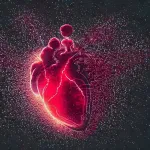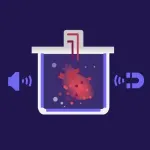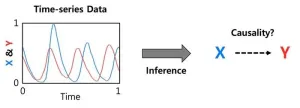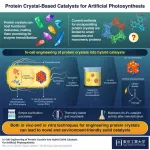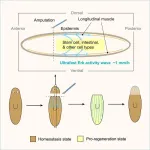(Press-News.org) As a bold venture at the forefront of biomedical research, the PULSE project is poised to develop paradigm-changing bioprinting technology for applications in space and on Earth. Awarded nearly 4 million euros by the European Innovation Council’s Pathfinder Open, PULSE emerges from interdisciplinary scientific collaborations and, over five years, will foster technological innovations to improve human health and pave the way for safer and more sustainable space exploration.
By combining magnetic and acoustic levitation into an innovative bioprinting platform, PULSE’s device should be capable of achieving unparalleled spatiotemporal control of cell deposition. This new technology facilitates the precise manipulation of biological materials, enabling the creation of highly sophisticated and realistic organoids that closely mimic the complexity of the corresponding human organs.
One of the key applications of PULSE’s innovative bioprinting technology is the creation of in vitro 3D human heart models, which are essential tools for studying the effects of space and radiation on the human cardiovascular system. These advanced heart models will provide invaluable insights into cardiac physiology and pathology, facilitating the development of preventive and therapeutic solutions for astronauts embarking on long-term space missions and cancer patients undergoing radiation therapy.
According to Lorenzo Moroni, project coordinator and Professor of Biofabrication for Regenerative Medicine at the University of Maastricht, “The ambitious goals of the PULSE project are as much related to space research as they are to healthcare on Earth. Bioprinted organoids that closely replicate the complexity of human organs have the potential to reduce the reliance on animal experimentation and provide a more accurate and efficient platform to study disease mechanisms and evaluate drug responses.”
The PULSE project brings together leading organisations in their respective fields, including the University of Maastricht (The Netherlands), Otto-von-Guericke University Magdeburg (Germany), Medical University of Graz (Austria), SCK CEN Belgian Nuclear Research Centre (Belgium), RDInnovation (Denmark), Space Applications Services (Belgium) and IN society (Italy).
With a wealth of expertise and resources at their disposal, the consortium’s institutions will combine their capabilities to make ground-breaking advances at the intersection of bioprinting, space medicine and heart disease research.
This ambitious project underlines PULSE’s team commitment to pushing the boundaries of scientific inquiry and technological innovation, driven by a desire to unlock the unknowns of human health and well-being in space and terrestrial living.
For more information on the PULSE project and media enquiries, please visit the project website at pulse-eic.eu
END
Multi-levitation bioprinting of heart models for space exploration and medicine
Cutting-edge magnetic and acoustic levitation will bioprint heart models to improve protections against radiation in space and on Earth.
2023-07-25
ELSE PRESS RELEASES FROM THIS DATE:
CHOP researchers validate pediatric “allergic march” in largest national study of its kind
2023-07-25
Philadelphia, July 25, 2023—In the largest study of its kind, researchers from Children’s Hospital of Philadelphia (CHOP) used electronic health record (EHR) data from more than 200,000 pediatric patients to describe patterns of pediatric allergies across the United States, validating a population-level pattern of allergy development known as the “allergic march,” in which allergies first present as eczema, followed by food allergies, asthma, and environmental allergies. The ...
Introducing GOBI: A breakthrough computational package for inferring causal interactions in complex systems
2023-07-25
In the quest to unravel the underlying mechanisms of natural systems, accurately identifying causal interactions is of paramount importance. Leveraging the advancements in time-series data collection through cutting-edge technologies, computational methods have emerged as powerful tools for inferring causality. However, existing model-free methods have struggled to differentiate between generalized synchrony* and causality, leading to false predictions. On the other hand, model-based methods, while accurate, have been limited by their dependence on specific models, hindering their widespread applicability.
*Synchrony ...
Towards artificial photosynthesis with engineering of protein crystals in bacteria
2023-07-25
In-cell engineering can be a powerful tool for synthesizing functional protein crystals with promising catalytic properties, show researchers at Tokyo Tech. Using genetically modified bacteria as an environmentally friendly synthesis platform, the researchers produced hybrid solid catalysts for artificial photosynthesis. These catalysts exhibit high activity, stability, and durability, highlighting the potential of the proposed innovative approach.
Protein crystals, like regular crystals, are well-ordered molecular structures with diverse properties and a huge potential for customization. They can assemble naturally from materials found within cells, which not only greatly reduces the synthesis ...
New study on sleep/circadian disturbance’s impact on multiple chronic pain disorders
2023-07-25
Can poor sleep and circadian rhythm make chronic pain conditions worse? Edson College Assistant Professor Chung Jung Mun plans to find out through an innovative longitudinal study.
Mun was awarded a $3 million grant from the National Institute of Neurological Disorders and Stroke, part of the U.S. National Institutes of Health, to explore the possible connection.
“There are countless individuals suffering from multiple chronic pain disorders. A person with chronic migraine headaches is also likely to suffer from chronic low back pain. What we’re trying to find ...
Knees up! Computational modeling could improve knee implant alignment
2023-07-25
A Texas A&M University doctoral student has collaborated with an innovative surgical navigation and robotics company on motion capture research that can potentially improve implant alignment during knee replacement surgeries.
Aaron Henry is a fourth-year Ph.D. student in the Doctor of Philosophy in Interdisciplinary Engineering program in the Department of Multidisciplinary Engineering. He worked with Caira Surgical, a surgical navigation and robotic orthopedic surgery company that focuses on simplifying workflows and developing technological ...
Regeneration might be a whole-body affair
2023-07-25
A mouse injured on one leg experiences an “awakening” of stem cells in the other leg as if the cells are preparing to heal an injury. Something similar happens in axolotls, which are masters at limb regeneration. Heart injuries in zebrafish can trigger certain changes in far-away organs like the kidney and brain.
“In many different organisms, you can see the whole body respond to an injury. But whether or not those responses actually have any function has been unclear,” says Bo Wang, assistant professor of bioengineering at Stanford, “So that’s what we’re focusing on.”
In ...
Mesoamerica a model for modern metropolises
2023-07-25
Jakarta … San Francisco … Shanghai … Phoenix … Houston.
These major cities and others around the globe have many similarities, but they share one particular commonality that is concerning for residents. They are among the global cities most affected by climate change.
While each of these cities has proven resilient for centuries, urban planners, community leaders and civil engineers continue to address their many environmental challenges. In preparing for these cities’ future, however, it might be more ...
What can central Utah’s earthquake ‘swarms’ reveal about the West’s seismicity?
2023-07-25
Most of the earthquakes rumbling under the West’s Great Basin come in surges, clustered together in time and place. Scientists call these seismic groups “swarms,” which are a distinct category from the numerous aftershocks following a big shake, such as the 5.7 magnitude Magna quake of 2020 on the Wasatch Fault.
Rather than getting spread out evenly over time, many of these small, often imperceptible quakes strike a region in a short period of time, say a few days or weeks.
Central Utah has been the stage for dozens of earthquake swarms that have been recorded over the past 40 years by an ever-expanding network of seismic arrays managed by the University ...
Encouraging Latinx youth to embrace ethnic pride can enhance their well-being
2023-07-25
Encouraging Latinx adolescents of Mexican origin to embrace their ethnic pride, cultural values, and connections to their cultural community contributes to positive development and better adjustment during adolescence, a new University of California, Davis, psychology study suggests.
Moreover, researchers said, cultural preservation can help Latinx youth cope with adverse life experiences and social threats such as racism and discrimination.
The study results were published this month in ...
Chapman University climate scientist finds new way to measure the Earth’s ability to offset carbon emissions
2023-07-25
A Chapman University scientist and his colleagues have determined how the Earth responds as it heats up due to climate change.
The scientists say a warming world calls for a new approach in detecting how much carbon dioxide comes out of ecosystems when the temperature changes — which tells us how well plants and soil can alleviate damage by removing carbon pollution from the atmosphere. The study is the first to find the temperature-carbon dioxide release relationship at the landscape level.
Their ...
LAST 30 PRESS RELEASES:
Exploring how the visual system recovers following injury
Support for parents with infants at pediatric check-ups leads to better reading and math skills in elementary school
Kids’ behavioral health is a growing share of family health costs
Day & night: Cancer disrupts the brain’s natural rhythm
COVID-19 vaccination significantly reduces risk to pregnant women and baby
The role of vaccination in maternal and perinatal outcomes associated with COVID-19 in pregnancy
Mayo Clinic smartwatch system helps parents shorten and defuse children's severe tantrums early
Behavioral health spending spikes to 40% of all children’s health expenditures, nearly doubling in a decade
Digital cognitive behavioral treatment for generalized anxiety disorder
Expenditures for pediatric behavioral health care over time and estimated family financial burden
Air conditioning in nursing homes and mortality during extreme heat
The Alps to lose a record number of glaciers in the next decade
What makes a good proton conductor?
New science reporting guide published for journalists in Bulgaria
New international study reveals major survival gaps among children with cancer
New science reporting guide published for journalists in Turkey
Scientists develop a smarter mRNA therapy that knows which cells to target
Neuroanatomy-informed brain–machine hybrid intelligence for robust acoustic target detection
Eight SwRI hydrogen projects funded by ENERGYWERX
The Lundquist Institute and its start-up company Vitalex Biosciences Announces Strategic Advancement of Second-Generation fungal Vaccine VXV-01 through Phase 1 Trials under $40 Million Competitive Con
Fine particles in pollution are associated with early signs of autoimmune disease
Review article | Towards a Global Ground-Based Earth Observatory (GGBEO): Leveraging existing systems and networks
Penn and UMich create world’s smallest programmable, autonomous robots
Cleveland researchers launch first major study to address ‘hidden performance killer’ in athletes
To connect across politics, try saying what you oppose
Modulating key interaction prevents virus from entering cells
Project explores barriers to NHS career progression facing international medical graduates
Jeonbuk National University researchers explore the impact of different seasonings on the flavor perception of Doenjang soup
Two Keck Medicine of USC Hospitals named Leapfrog Top Teaching Hospitals
World-first discovery uncovers how glioblastoma tumours dodge chemotherapy, potentially opening the door to new treatments
[Press-News.org] Multi-levitation bioprinting of heart models for space exploration and medicineCutting-edge magnetic and acoustic levitation will bioprint heart models to improve protections against radiation in space and on Earth.
